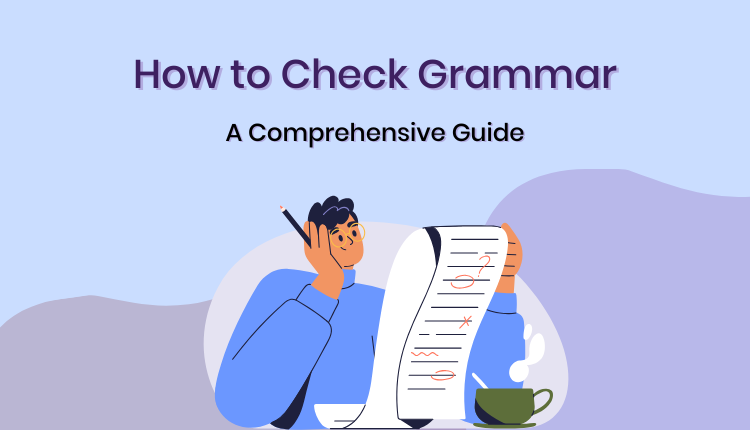In the realm of academia and professional writing, grammar accuracy forms the foundation of effective communication. Beyond mere correctness, polished grammar reflects credibility, fosters clarity, and enhances readability. Mastering grammar-checking techniques ensures that your writing leaves a lasting impression.
This comprehensive guide dives into the significance, challenges, and best practices of grammar-checker tools, offering actionable insights and tips.
Why Is Grammar Checking Crucial?
Grammar checking is essential not just for crafting error-free documents but also for ensuring proper tone, structure, and audience alignment. In professional and academic contexts, precision is vital—minor errors could lead to misinterpretation, a loss of credibility, or even rejection.
- Academic Writing: Journals and research papers demand flawless grammar for readability and acceptance, especially for theses or manuscripts.
- Corporate Communication: Proper grammar enhances trust among stakeholders and ensures clarity in business writing.
- Personal Impact: Solid grammar skills project professionalism and leave a good impression.
Whether drafting a scientific paper or preparing a business report, accurate grammar directly influences how your content is received.
Common Grammar-Checking Obstacles
Writers often encounter specific challenges in achieving grammar accuracy. Recognizing these hurdles can help you overcome them with the right strategies:
- Complex Sentences: Long, intricate sentences are more prone to grammatical mistakes that are harder to detect.
- Technical Terminologies: Domain-specific language—common in medical, scientific, or legal writing—can complicate traditional grammar rules.
- Non-Native Use: Writers with English as a second language may struggle with intricacies like verb tense or idiomatic expressions.
- Tone Consistency: Grammar-only focus might disregard the uniformity of style across the document.
Identifying these challenges enables writers to adopt better tools and techniques for precision.
How to Master Grammar Checking Like a Pro
1. Start With Intentional Proofreading
Manual proofreading is a critical initial step in catching glaring grammar errors. Here’s how to make the most of it:
- Read Aloud: Speaking your content reveals awkward phrasing and grammatical inconsistencies.
- Isolate Elements: Break down your check into grammar categories—spelling, punctuation, and syntax.
2. Use Advanced Grammar Tools Effectively
Leverage AI-powered tools like Trinka designed for advanced grammar correction, especially for technical and academic scenarios.
Features of Trinka include:
- AI Accuracy: Identify complex errors such as subject-verb disagreements or misplaced modifiers.
- Tone Adjustment: Ensure readability across varied audiences—academic, business, or general readers.
- Technical Vocabulary Support: Make corrections compatible with domain-specific jargon.
3. Know Your Grammar Basics
Even the most advanced tools can’t replace a solid understanding of grammar fundamentals. Common rules include:
- Subject-Verb Agreement: Avoid mismatches between the subject and verb.
- Proper Article Usage: Misplacing “a,” “an,” or “the” alters the sentence’s meaning.
- Punctuation Guidelines: Proper punctuation ensures clarity and fluency.
Studying academic grammar guides tailored to your field is a worthwhile investment.
4. Prioritize Contextual Flow
Focus on sentence connectivity. Cohesion involves well-planned use of transitions, conjunctions, and parallel sentence structures while retaining tone consistency.
5. Evaluate and Cross-Verify
To reduce over-reliance on tools, manually cross-check drafts across different formats (e.g., printed copies or alternative screens).
6. Perform Final Edits Using Trinka
Tap into Trinka’s specialized features:
- Grammar and Plagiarism Check: Enhance both grammatical precision and originality in one go.
- AI-Powered Paraphrasing: Optimize readability alongside grammar fixes.
- Publication-Ready Features: Tailor content to meet journal submission guidelines seamlessly.
Quick Grammar Tips for Writers
- Prioritize Consistency: Maintain the same style across sections for better readability.
- Simplify Long Sentences: Concise sentences enhance comprehension.
- Balance Vocabulary: Use adjectives sparingly to avoid redundancy.
Integrating Grammar Tools in Research Writing
Professionals and academicians often face time constraints. Grammar checking should complement—not disrupt—the workflow:
- Write your draft freely without pausing for corrections.
- Use Trinka’s free grammar checker for a thorough review after completing the draft.
- Implement suggested edits and refine until consistent quality emerges.
Why Trinka Stands Out for Grammar Checking?
Amidst a plethora of grammar tools, Trinka outshines competitors by catering specifically to the nuanced requirements of professionals and academicians.
- Tailored Precision: Trinka handles technical data and academic nuances.
- Smart Tone Adjustments: Its AI adapts style to suit professional or academic targets.
- Holistic Checks: Beyond grammar, Trinka provides plagiarism detection and style recommendations.
If you aim for journal-ready or business-polished content, make Trinka your ultimate grammar ally.
Avoid These Mistakes During Grammar Checking
To get the most out of grammar checks, steer clear of these pitfalls:
- Overdependence on Tools: AI tools like Trinka are invaluable but should complement—not replace—human proofreading.
- Skipping Style Guides: For academic work, honor formatting rules specific to MLA, APA, or other styles.
- Single Proofread Syndrome: Ensure multiple rounds of review for a refined output.
Ready to Elevate Your Writing?
Grammar may seem daunting initially, but with the right tools and strategies, it becomes a seamless part of your writing process. Embrace tools like Trinka to polish your content into a compelling, professional piece.
Let Trinka be your grammar-checker partner and gain confidence in both academics and corporate domains. Enhance clarity and let your ideas resonate without the distraction of grammatical flaws. Ready for professional-grade writing? Let Trinka guide your journey!

